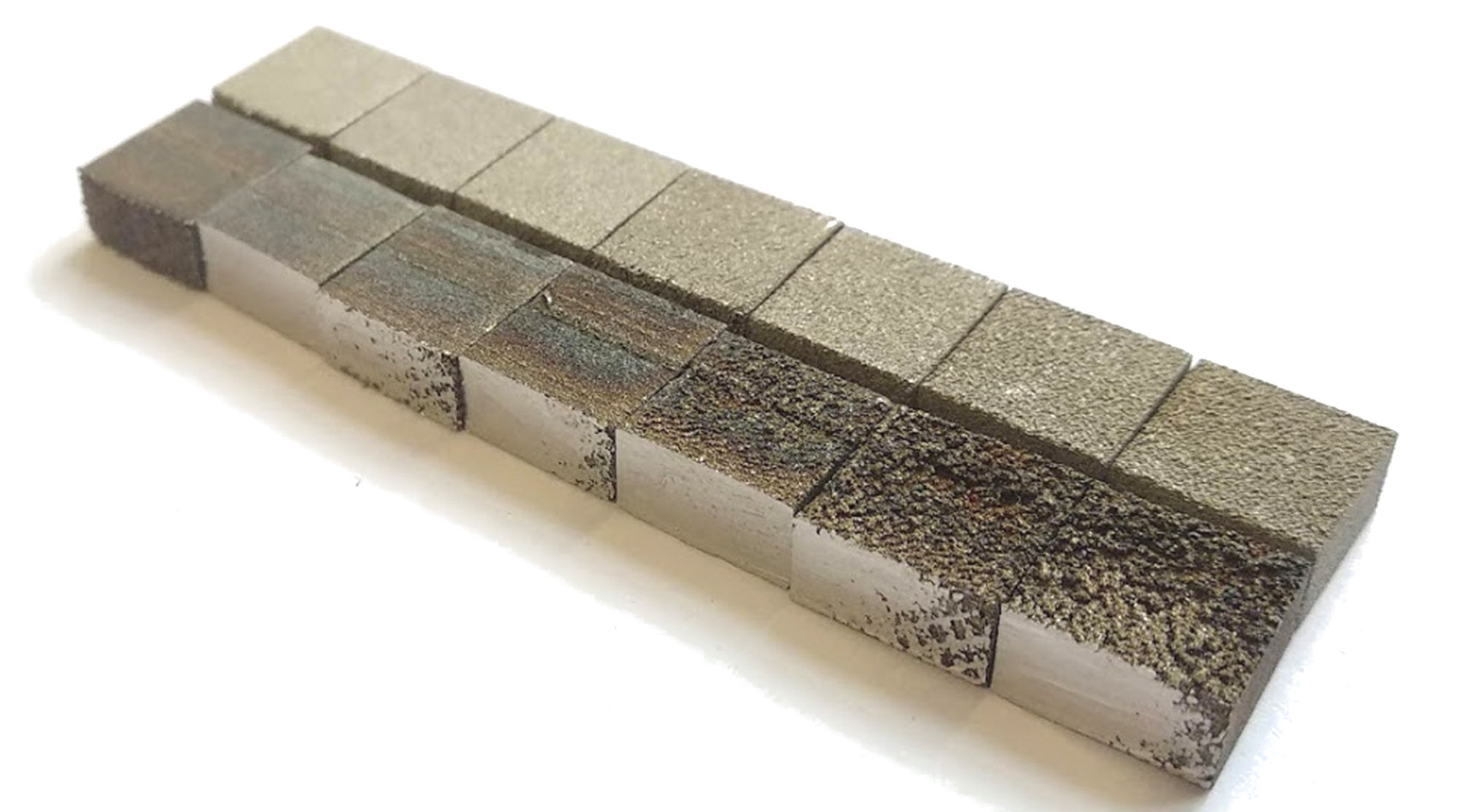Researchers at Graz University of Technology (TU Graz), Austria, have modified 316L stainless steel powder for additive manufacturing for better print quality and surface finish.
The pioneering aspect of the study was the addition of silicon nitride to control the reaction of borides, which were used as activators in the sintering process. Using this method, the researchers were able to minimize the need for support structures and produce parts with better surface and mechanical properties.
According to Mateusz Skalon, co-author of the research paper, the modified powder called NewGen SLM powder can result in “cost savings of up to 114 euros … per each kilo of printed metal.”

NewGen SLM metal 3D printing powder
3D printing of metals allows the creation of highly complex and lightweight end-use parts that can be used in the aerospace industry or biomedicine. However, despite the demand for metal 3D printing, there are challenges to be overcome such as minimizing support structure and improving the surface quality of finished parts.
NewGen SLM was made using boride compounds which were mixed with the 316L stainless steel powder. Although borides increase the density of a sinter, they do not dissolve well in iron-based materials and after melting and solidifying they form a layer around the particles instead. To control the behavior of the borides for desired results silicon nitride was added to the metal powder.
The researchers tested twenty different blends of laboratory-made 316L stainless steel powder for physical and mechanical properties and porosity. It was concluded that the distortion of a sinter can be reduced by controlling the amount of silicon nitride and borons.
The authors write, “by combining additions of boron and Si3 N4 in various proportions to AISI 316L stainless steel, one may control a sinter ’s distortions and its transverse rupture strength by direct control of the amount of solidified secondary phases (originating from the eutectic liquid phase).”
Furthermore, TU Graz scientists have modified the powder so that in addition to yielding a better surface finish and mechanical properties, NewGen SLM requires fewer support structures.
Commercializing NewGen SLM
With support from TU Graz, the researchers intend to commercialize the NewGen SLM powder. This will be done according to the Spin-off Fellowship program which was formed to help develop intellectual property in Austrian universities for early start-ups.
Skalon said, “We’ll be testing the powder on the most common laser melting systems in the next 16 months,”
Skalon continued, “Basing on this, we want to establish a production company in Austria directly after the Fellowship where purchased 316L stainless steel powder will be modified and sold.”
“Target groups will include manufacturers of highly complex metal parts, manufacturing companies in the automotive, aircraft and mechanical engineering sectors as well as research institutions dealing with additive manufacturing methods.”
Part of the technology discussed in this article was published in Article Improving the Dimensional Stability and Mechanical Properties of AISI 316L + B Sinters by Si3N4 Addition. It was published in Materials and was jointly authored by Mateusz Skalon, Ricardo Henrique Buzolin, Jan Kazior, Christoph Sommitsch, and Marek Hebda.
To learn more about metal additive manufacturing, subscribe to our 3D printing newsletter and join on Facebook and Twitter.
For career opportunities visit our 3D Printing Jobs page.
Feature image shows the NewGen powder by TU Graz researchers in the upper row has a better surface. Image via IMAT – TU Graz.


